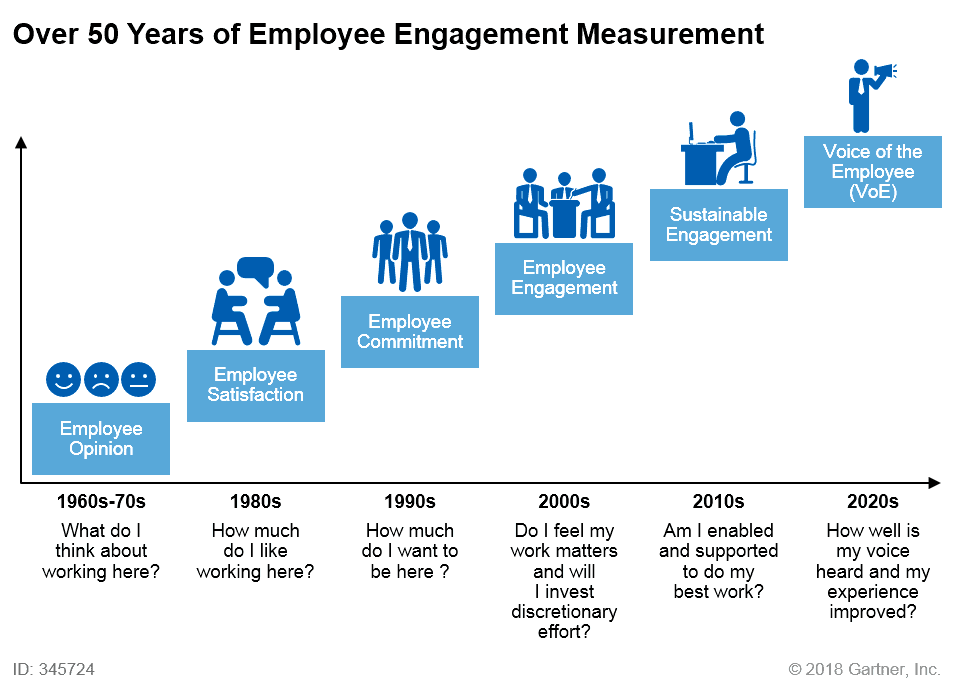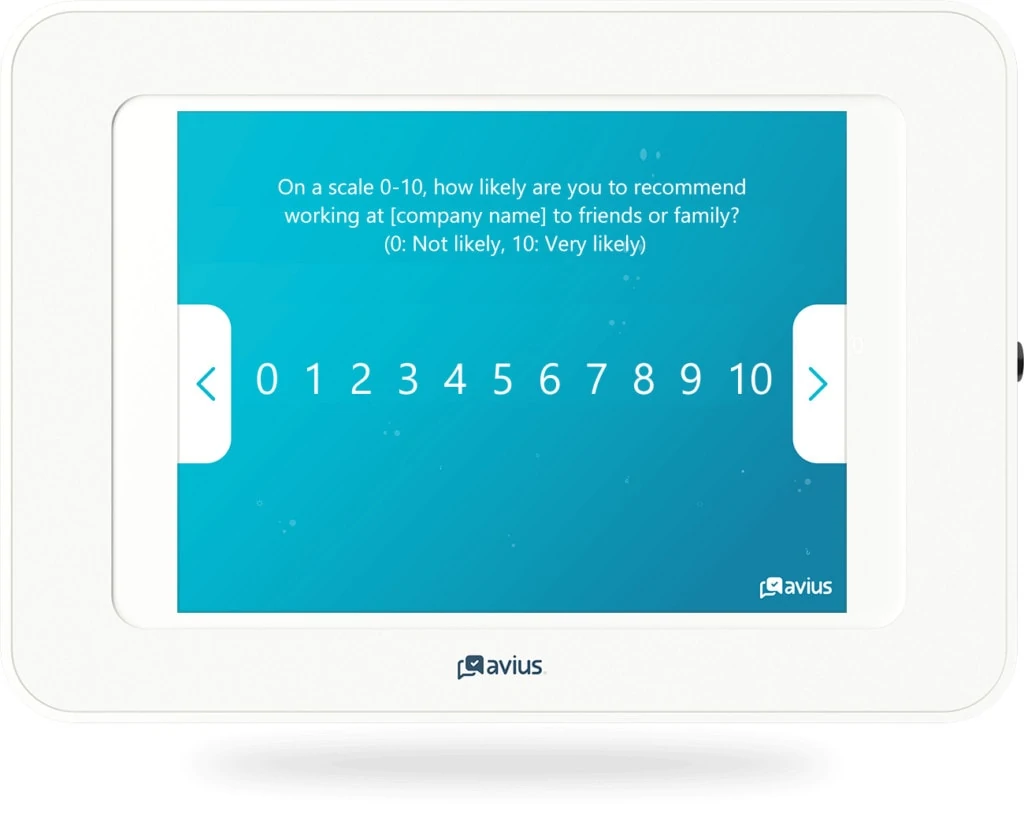Following on from our previous blog post, Boosting Customer Satisfaction with Employee Engagement, let’s look at the importance and metrics for measuring employee engagement in more detail.
A recent Forbes study explained that companies which invested in employee experiences were four times more profitable than those that didn’t. The strong link between employee satisfaction and improved business performance was also explored by multiple researchers in the UK and US.
For example, academics from the University of Kansas and East Anglia’s Norwich Business School both revealed that having a star higher rating on Glassdoor predicted a significant jump in the market value of a company. These findings prove the powerful relationship between employee engagement and business profitability, and the importance of measuring the former.
PAST, PRESENT AND FUTURE
Companies have been measuring employee satisfaction and engagement for the past 50 years. First on paper, now digitally, employee surveys continue to transform and evolve not only in their form, but also the style of questions. Gartner’s graph below demonstrates these changes:

Whilst in the 1980s employers were interested in how much their staff liked working at their company, it’s no longer the right question to ask in 2019. It won’t provide a full or adequate picture of an employee’s dedication and motivation. Being satisfied isn’t necessarily a good indicator of productivity or commitment to your company’s values. Businesses should try and capture the emotional engagement, recognition, and growth contribution, hence asking: How well is my voice heard?
HOW TO MEASURE EMPLOYEE ENGAGEMENT
Have regular conversations. Every conversation is an opportunity to receive valuable feedback, connect with your staff, and improve operational efficiency. Therefore, it’s important to regularly talk to your employees about their experiences at work. Whilst performance reviews are a good occasion to do so, they don’t usually encourage employees to truly open up due to their formal nature. Bi-weekly or monthly informal conversations could help develop trust between a supervisor and an employee, resulting in better insights about their engagement.
Consider surveys. In larger companies it might be problematic and time-consuming to regularly talk to all employees about their experiences and commitment. That’s why employee engagement surveys could be the ideal solution. Shorter employee surveys, often called pulse surveys, provide real-time insights and can help you address issues immediately, improving employee performance. They also provide an important aspect of anonymity as many employees might not feel comfortable being honest and open. Especially if they’ve identified a problem with their manager.
WHAT TO ASK
There are numerous areas employers should focus on when measuring employee engagement. The most common ones include:
Job understanding. It’s important for your staff to understand their responsibilities in order to perform well. Ask if they received the right training and have sufficient resources to be successful at their job. If they aren’t clear on their duties, they’ll be frustrated, confused, and less motivated to fulfil their tasks.
Relationship with supervisors. If you have a good relationship with your manager, your motivation to deliver results increases. Work relationships have a positive impact on employees’ wellbeing and are important factors to consider when measuring engagement.
Perception of leadership. The way your employees view the decision-makers can have a significant effect on their motivation to perform well. Many leaders might think they inspire creativity and innovation, but a study from VitalSmarts uncovers that most employees associate their leaders with obedience and predictability. Ask your employees if they have confidence in the leadership and if they think the company is being steered in the right direction.
Opportunities for growth. Employees want to grow professionally, learn new skills, and be considered for promotions in the future. If your company culture promotes that, you’re more likely to retain your workforce. Ask your employees if they feel you provide enough opportunities for career development.

With pulse surveys your business has the opportunity to focus on a specific area for improvement at a specific time. However, some questions should be consistent to allow you to track KPIs and trends. Consider getting advice from experts at Avius, who will design the right questions and tailor the analytics to your needs.
EMPLOYEE ENGAGEMENT METRICS
EMPLOYEE NET PROMOTER SCORE
Net Promoter Score (NPS) is a popular metric used to measure the likelihood of customers recommending your product or service. You can apply the NPS concept to employee engagement to create Employee Net Promoter Score (eNPS):

It should be a familiar metric to many HR professionals, who can regularly evaluate the percentage of Promoters, Passives, and Detractors to see how emotionally invested employees are.
As more and more companies use eNPS, there’s a greater possibility for benchmarking against your competitors. On its own, eNPS won’t tell you much, but when compared with your previous scores, or other company’s results, it becomes meaningful.
ABSENTEEISM AND TURNOVER RATE
Every company should measure their employee turnover and absenteeism rates. Satisfied and committed staff are more likely to come to work every day and contribute, as well as stay with the company longer. Understanding turnover will help you manage employee expectations, improve non-financial factors, and increase productivity.
REFERRAL SCHEME PERFORMANCE
Many companies have referral schemes which reward employees who promote job vacancies to their friends and family. The metrics used for tracking the success of the scheme can also be used to measure the engagement of your employees. Look at how many interviewees come from employee referrals and how many of those are offered or have accepted the position.
People who recommend their workplace to friends or LinkedIn connections are more likely to be fulfilled and motivated to help the company grow. And candidates who came through the referrals can be confident it’s a good place to work.
SUMMARY
Measuring and improving employee engagement can bring many benefits to all businesses. From better operational efficiency and higher performance to increased customer satisfaction and retention. It isn’t, however, a one-off activity, but an ongoing and complex process which requires a comprehensive strategy.
Before deciding on the right method for your business, have a clear idea of what you want to measure and establish benchmarks. Whilst most employee engagement metrics won’t tell you much on their own, their relevance increases when combined with other data and compared with previous scores.
When designing employee engagement surveys, consider asking experts, such as Avius, for advice to increase participation rate and gather valuable insights.
By Natalia Kaczmarek


